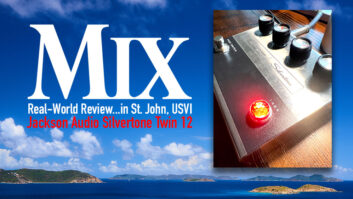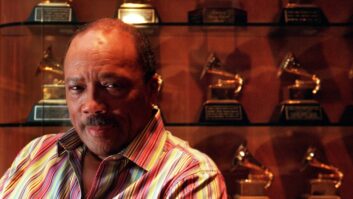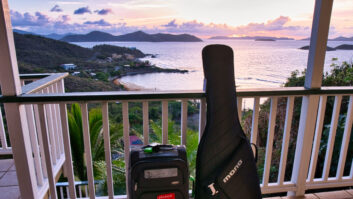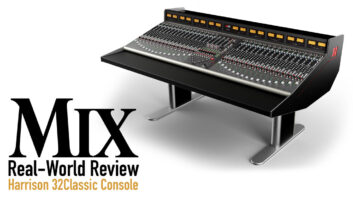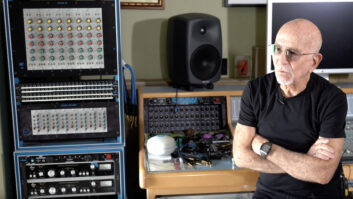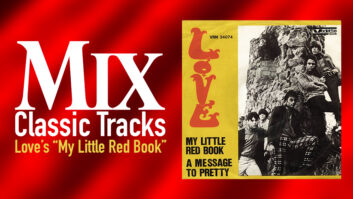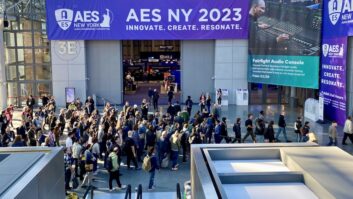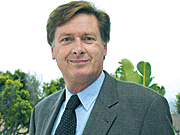
When Bruce Jackson got his start in the live sound industry in the ’60s, sound reinforcement wasn’t much more than an idea — consoles were pretty basic, electronics (onboard and outboard) were limited and line arrays didn’t exist. Since then, Jackson has devoted his life to improving concert sound quality — as an inventor, a soundman and a music lover.
At an early age, Jackson was intrigued with electronics and sound. In his first SR venture, then 18-year-old Jackson (along with partner Phil Storey) co-created JANDS in his native Australia, a lighting and sound rental firm with an electronics design and manufacturing division. There, Jackson helped build column P.A.s, guitar amps, power amps and simple mixers. “We even made the printed circuit boards,” Jackson recalls. “It was a great experience.” Not content to rest on his laurels, three years later, Jackson sold his share in JANDS, traveled to the U.S. and joined a young Clair Bros. Audio.
While at Clair, Jackson mixed for many Elvis Presley tours, designing and building equipment during his downtime. “Being both a mixer and designer, I was able to design in features that improved the way things worked for me,” Jackson says. With original ideas and a great crew, Jackson helped develop the first hanging sound systems (not for sound quality but to sell the maximum number of unobstructed seats) and a sophisticated mixing console, which folded out of the case and was the first to use parametric EQ. This board became a Clair mainstay for more than 12 years.
After the passing of The King, Jackson hooked up with Bruce Springsteen from 1978 to 1988. This proved to be a fortuitous partnership, as Springsteen supported Jackson’s quest for quality. “I worked with his musicians, helping with equipment choices and implementation,” Jackson remembers. “I hacked into Bruce’s favorite guitar to install special waterproof pickup selector switches and an electronic buffer to drive his 100-foot-long guitar cord so there were highs left at the end. In places with poor acoustics, Bruce supported hanging curtains and other acoustic improvements most acts would never consider.” Jackson “founded” other companies in-between tours, including promoting and setting up distribution for Fairlight’s first music sampler — helping launch the formidable company.
Jackson’s next venture, creating Apogee Electronics, was founded on the release of the CD in Japan. Jackson had received a CD player as a gift on a Japanese tour and ran around collecting any CDs he could find. Disappointed with the sound quality, Jackson wanted to find out how he could optimize digital audio, focusing on the analog filters that are part of the AD/DA process. Under his leadership Apogee was the first to create Soft Limit, low-jitter clocks, UV22 dither, reference-standard AD/DAs and more.
In the early ’90s, Jackson began working with legendary performer Barbra Streisand, who, at that time, hadn’t toured in more than 30 years. But while on tour, Jackson missed “playing with digital audio” and so suggested to Clair Bros. that they work together. “The next project was to develop the ultimate processor for live sound,” he says. “I pulled my friends Dave [McGrath, founder of Lake Technology] and Ed Meitner into a partnership with Clair Bros. Audio we named Clair Technologies LLC. We wanted to be able to create any-shaped EQ curve with non-minimum phase response. I always felt that the basic parametric EQ with frequency, shape and boost/cut controls was too limited: the shape of the classic parametric EQ spills over into neighboring areas you don’t want to affect, regardless of chosen shape; and why should you be stuck with just a bell curve when it would be great to EQ whole areas of the spectrum as one?”
And the Clair iO processor was born. “We created entirely new DSP technology and a human interface that does ‘all of the above’ and lots more. We took great care with converter sound quality using tweako tricks from Ed and me.” Lake Technology went public and purchased the proprietary technology from Clair LLC. (With Jackson onboard as VP of R&D — and still currently — Lake now sells the Clair iO as the Contour in addition to the new Mesa Quad EQ.)
At Lake, development has continued at a brisk pace. “It’s an inspiration to watch all our different personalities work together as one to create better live sound,” Jackson says. With the recent acquisition of Lake Technology by Dolby Laboratories, we can expect to see more live sound “firsts” from Jackson and his team. But for Jackson, it comes back to why he does this at all: “It seems the more you learn, the more you realize what you don’t know. The more you dig, the more you find needs attention. A true perfectionist’s dilemma.”
